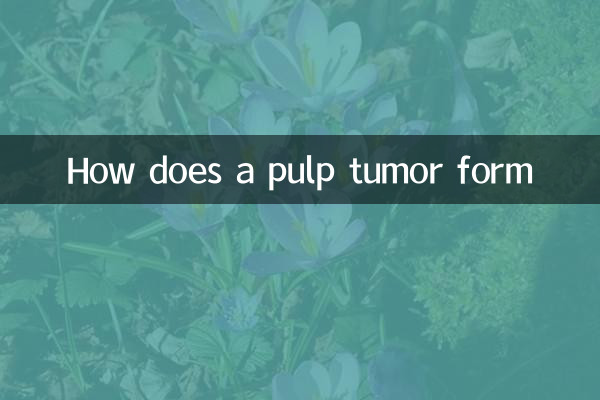How does a pulp tumor form
Powder tumors, medically known as sebaceous cysts, are a common skin problem. It usually manifests as a round lump under the skin, filled with sebum and keratinous substances. Although pillomas are mostly benign, understanding the causes of their formation and treatment methods is crucial for prevention and response. This article will combine recent hot topics and structured data to analyze the formation mechanism of phlegm tumors in detail.
1. Basic concepts of powder tumors

Powder tumors are cysts that form when sebaceous gland ducts are blocked and sebum cannot be excreted normally, and accumulates subcutaneously. It is often found in areas with rich sebaceous glands such as the head, face, neck and trunk. Powder tumors are usually painless, but symptoms such as redness, swelling, and pain may occur during secondary infection.
| feature | describe |
|---|---|
| Appearance | Round or oval subcutaneous lump with smooth surface |
| size | From a few millimeters to a few centimeters |
| Contents | White or yellow cheese-like substance with a stinky smell |
| Growth speed | Usually slowly growing |
2. Causes of the formation of phlegm
The formation of phlegm tumors is mainly related to the following factors:
| Cause Category | Specific reasons |
|---|---|
| Sebaceous gland blockage | Excessive sebum secretion or impeded excretion |
| Trauma factors | Skin damage causes damage to sebaceous duct |
| Genetic tendency | A history of multiple phlegm tumors in the family |
| Hormone changes | Hormone fluctuations during adolescence and pregnancy are prone to occur |
| Hygiene habits | Inadequate skin cleansing and blocked pores |
3. Recent hot topics
In the past 10 days, topics about skin health and powder tumors have sparked widespread discussion on social media:
| topic | Popularity index | Main discussion points |
|---|---|---|
| How to remove powder tumors at home | 85 | Disputes on safety and effectiveness |
| Distinguishing between powder tumor and skin cancer | 78 | How to distinguish between benign cysts and malignant tumors |
| Minimally invasive phimectomy | 92 | Comparison of new technologies and traditional surgeries |
| Powder tumor prevention diet | 65 | Effects of specific nutrients on skin health |
4. Treatment methods for powder tumors
The treatment of powder tumors must be selected according to the specific circumstances:
| Treatment method | Applicable | Pros and cons |
|---|---|---|
| Observe and wait | Asymptomatic small powder tumor | Non-traumatic but may be long-term |
| Drug injection | Inflammatory powder tumor | Fast anti-inflammatory but prone to recurrence |
| Surgical resection | Larger or repeated inflammation | Good cure but scars |
| Laser therapy | Small light-slight phlegm | Less trauma but high cost |
5. Life advice for preventing powder tumors
Prevention is better than treatment, and the following measures can reduce the risk of phlegm tumors:
1. Keep your skin clean, especially areas with abundant sebaceous glands
2. Avoid oversqueezing small bumps on the skin
3. Control oil secretion and use oil-controlled products appropriately
4. Eat a balanced diet to reduce the intake of high-sugar and high-fat foods
5. Regular skin examinations to detect abnormal changes in a timely manner
6. Common misunderstandings about powder tumors
There are many misunderstandings about phthaloma, which need clarification:
| Misconception | fact |
|---|---|
| Powder tumors disappear on their own | Most will persist and will not fade away on their own |
| Crushing the powder tumor can cure | May cause infection and recurrence, self-treatment is not recommended |
| Powder tumors can become cancerous | In rare cases, malignant changes may occur, but the probability is very low |
| Powder tumors are caused by poor hygiene | Hygiene is only one of the factors that affect it, not the only reason |
In summary, the formation of phlegm tumors is the result of the combined action of multiple factors. Understanding the causes and handling them correctly can help us better prevent and manage this common skin problem. If suspicious tumors are found, it is recommended to seek medical treatment in a timely manner to avoid complications caused by improper treatment.

check the details

check the details